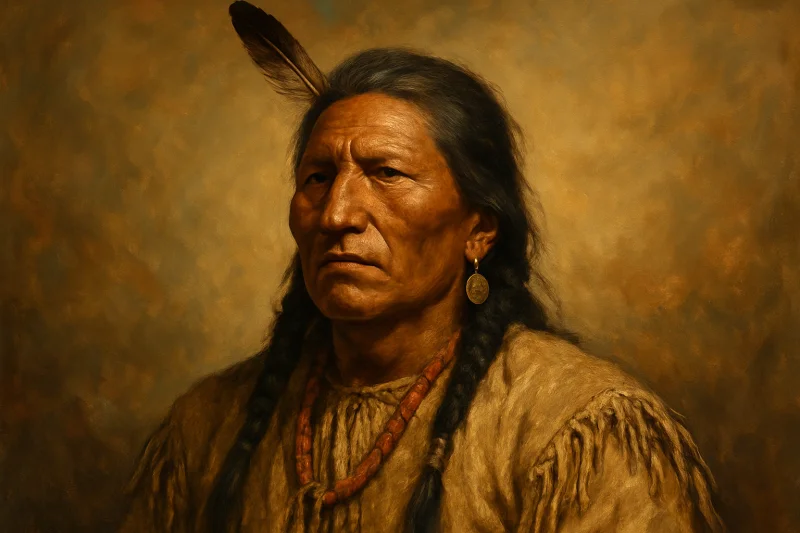Short Summary
Crazy Horse was a prominent Oglala Lakota leader known for his role in the resistance against U.S. government encroachment on Native American territories. Born around 1840, he became a legendary warrior and tactician, leading his people in several key battles, including the Battle of the Little Bighorn. Crazy Horse is revered for his unyielding commitment to preserving his people's way of life and land. Despite his early death, his legacy endures as a symbol of Native American resistance and resilience.
Early Life & Education
Crazy Horse was born around 1840 near present-day Rapid City, South Dakota. He was a member of the Oglala band of the Lakota Sioux. His father, also named Crazy Horse, was a respected medicine man, while his mother, Rattling Blanket Woman, came from the Miniconjou Sioux. From a young age, he was recognized for his bravery and skill in hunting. Unlike many of his peers, Crazy Horse did not follow the path of formal education but was deeply influenced by the stories and traditions of his elders. His early experiences in battle and his vision quest significantly shaped his perspective and leadership style.
Career Highlights
Crazy Horse emerged as a formidable leader during the 1860s, at a time when tensions between Native American tribes and U.S. forces were escalating. He played a pivotal role in the Fetterman Fight in 1866, successfully ambushing and defeating a U.S. military detachment. His most notable contribution was his leadership in the Battle of the Little Bighorn in 1876, where he led a coalition of Native American forces to a significant victory over General Custer's troops. Despite his military success, Crazy Horse was deeply committed to peace and sought to protect his people’s lands and way of life through negotiation whenever possible.
Major Achievements
- Led the Native American forces to victory at the Battle of the Little Bighorn in 1876.
- Played a key role in the Fetterman Fight, contributing to the defeat of U.S. forces.
- Served as a leader and symbol of resistance against U.S. government policies.
- Negotiated for the protection of Native American lands and culture.
Famous Quotes
- "My lands are where my dead lie buried."
- "I will fight no more forever."
Interesting Facts
- Crazy Horse was never photographed, and his appearance remains a subject of speculation.
- He was known for his modesty, often refusing to wear war bonnets or other symbols of rank.
- Crazy Horse was mortally wounded under controversial circumstances in 1877 while under arrest.
- A massive mountain carving in South Dakota is being created in his honor, known as the Crazy Horse Memorial.
Legacy / Influence
Crazy Horse's legacy is a profound symbol of Native American resistance and perseverance. His leadership and bravery in battle have inspired countless stories and cultural references. He remains an enduring figure in Native American history, symbolizing the struggle for sovereignty and cultural preservation. The Crazy Horse Memorial stands as a testament to his enduring impact and the ongoing recognition of Native American heritage and rights.
FAQ
Q: Why is Crazy Horse famous?
A: He is famous for his leadership in battles against U.S. forces, particularly the Battle of the Little Bighorn.
Q: Did Crazy Horse negotiate with the U.S. government?
A: Yes, he sought to protect his people’s lands through negotiation, despite his prowess in battle.
Q: Is there a monument dedicated to Crazy Horse?
A: Yes, the Crazy Horse Memorial is a mountain carving in South Dakota honoring him.
Q: How did Crazy Horse die?
A: He was mortally wounded in 1877 under controversial circumstances while under arrest by U.S. forces.








